Celebrate Dr. Seuss with this edible green eggs and ham science experiment. Not only will the kids learn about anthocyanins, but they will also enjoy a delicious breakfast!
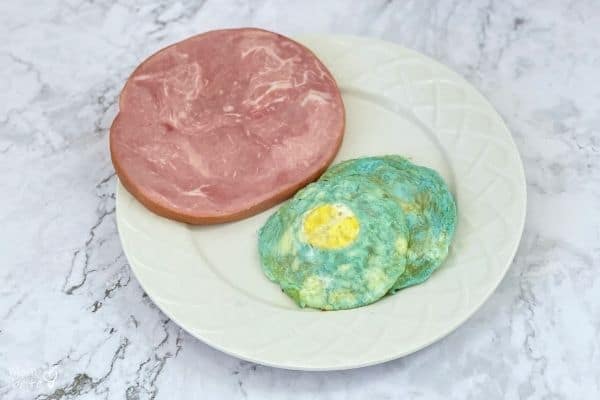
Last week, we made naked green eggs as a fun STEM activity after reading Dr. Seuss’s Green Eggs and Ham. The kids had a blast and loved playing with the bouncy egg. However, they were kind of bummed that they couldn’t eat the green egg.
So that’s why this week, we made edible green eggs and ham for lunch. Sure, you can simply color the eggs by adding green food coloring, but what’s the fun in that?
For this edible green eggs and ham science experiment, we used red cabbage juice to dye our eggs. Interestingly, red cabbage juice contains a natural pH indicator that tells us whether something is an acid or a base.
We will get to the science behind this experiment in a little. Meanwhile, read on to see how you can make green eggs for St. (hotcanadianpharmacy.com) Patrick’s Day, Dr. Seuss’s birthday, or just for fun!
Edible Green Eggs and Ham Experiment
Supplies:
- Eggs
- Red cabbage
- Blender
- Strainer
- Bowl
- Spoon
- Oil
- Frying pan
Instructions:
1. Blend the Red Cabbage
Chop up the red cabbage into small pieces and place them in a blender. You don’t need to use the whole cabbage – you only need a small amount of red cabbage juice to turn the eggs green. We did blend the whole red cabbage because I wanted to save the juice for the pH experiment.
Pour just enough water into the blender for the mixture to blend smoothly. You don’t want to add too much water, or else the red cabbage mixture will be too watery. We filled the blender with as much red cabbage as possible and about a quarter full of water.
Blend the mixture on high until smooth.
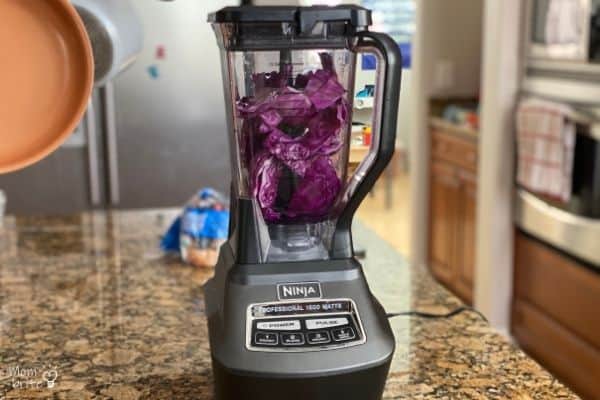
2. Strain the Red Cabbage Juice
Pour the mixture through a strainer to filter out the pulp. Use a bowl to catch all the red cabbage juice underneath the strainer. Use a spoon to press down on the pulp and get as much juice out of it as you can.
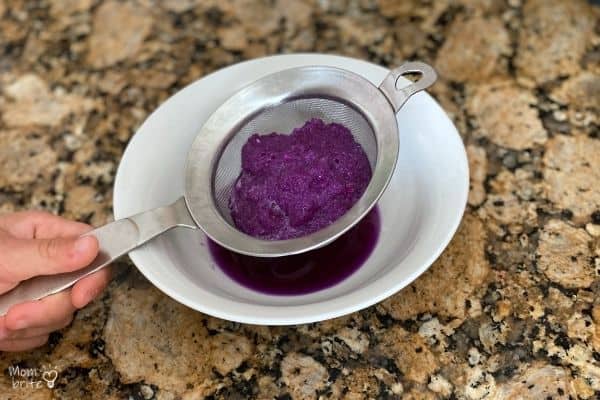
3. Mix the Red Cabbage Juice and Egg Whites
Separate the egg whites from the yolks.
Add a little bit of the red cabbage juice to the egg whites. You can see that initially, the red cabbage juice remains purple on top of the egg whites.
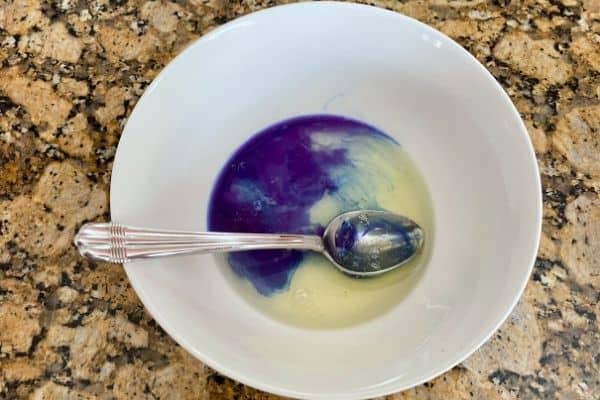
Mix the juice with the egg whites. Notice the color changes to green!
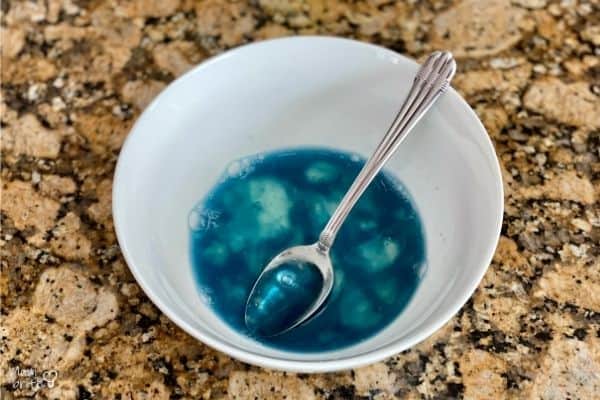
4. Cook the Green Eggs
Pour the green egg whites into the pan and place the yolk on top. Cook the egg sunny-side up until the egg is done.
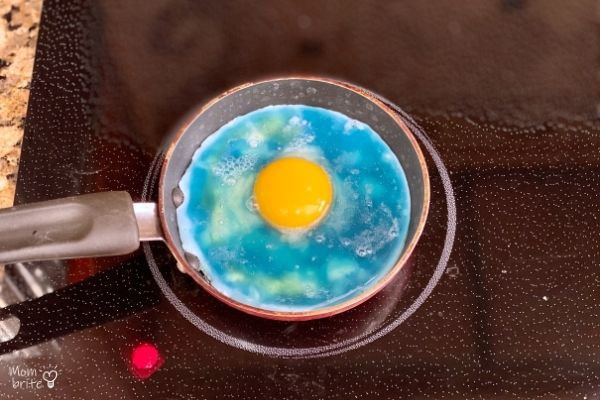
I have to admit that I am not the best cook when it comes to eggs. When I tried flipping the eggs over, the egg whites would pour into the pan and cover the yolk.
I wanted to make edible green eggs like the picture in the Green Eggs and Ham book, where you can see the egg yolk on top of the egg white. Therefore, I ended up placing the egg yolk in the pan prior to pouring in the egg white and it worked!
You are probably a better cook than me so use whatever technique or method you use to cook a sunny-side-up egg!
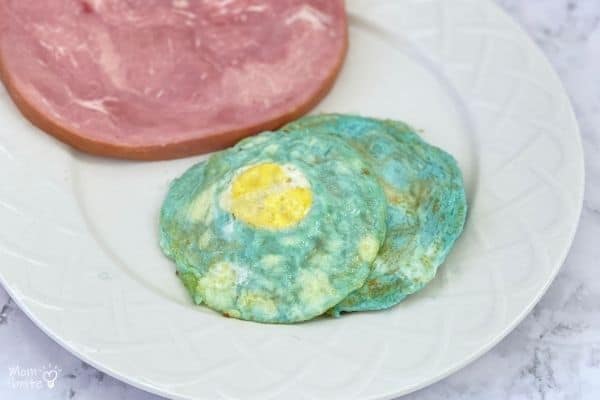
Science Behind the Edible Green Eggs and Ham Science Experiment
Red cabbage juice contains a water-soluble pigment called anthocyanins, which changes color when mixed with an acid or a base. It turns red when mixed with something red, and green when mixed with something basic.
pH measures how acidic or basic a solution is. It ranges from 0, which is extremely acidic, to 14, which is very basic. A pH of 7 indicates that the solution is neutral.
Egg whites are alkaline with a pH of around 9; in other words, it is a base. Therefore, when you mix the red cabbage juice with egg white, the pigment changes color to green.
Adding heat and cooking the egg does not change the acidity of the egg white. Therefore, the color is preserved and your kids can enjoy the green eggs with their ham!
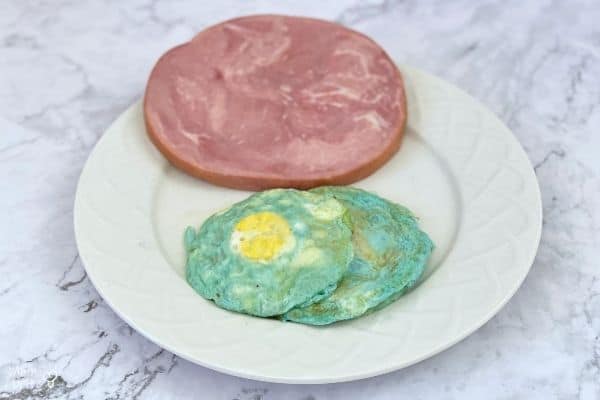
Does the Red Cabbage Juice Change the Flavor of the Egg?
I took a few bites after I cooked the green eggs and I did notice a slight difference in taste, but barely noticeable. After all, you are only using a small amount of cabbage juice to mix in with the egg white, so there shouldn’t be a huge change in flavor.
My kids, who ended up eating 4 green eggs each, said that they liked the taste. I don’t know if they actually prefer the red cabbage juice flavor, or if they were just so amused by the green colors that they ended up inhaling the eggs. You “eat with your eyes first” after all!
If your kids love Green Eggs and Ham, make sure you also check out the naked green eggs experiment and watch your kids’ mouths fall when they discover you can bounce a raw egg!
Related Posts:
